There are many different types of buffing wheels, each designed to accomplish different tasks. We have put a list together of the different buffing and polishing wheels that we carry to help you understand some of the differences between them and find the right ones for you and your work.
Most wheels and buffs are made with one of three traditional centers that make them ideal for working with different types of machines or better for being used for different purposes. A stitched leather center will add stiffness and durability to a buff. A plastic center works much like the old traditional lead centers, providing ultimate durability without the hazards of using the lead. And finally, a shellac center is an economical option that provides a tight fit on various tapered spindles.
 Cotton and Muslin Buffs
Cotton and Muslin Buffs
The soft buffs made of muslin style cotton are generally used with rouge to produce a final polish. Muslin buffs are very similar to other cotton buffs, like chamois or cotton flannel buffs, and are good at many of the same things. You can get these buffs in many different diameters from small 1 inch diameter buffs to large 6 inch diameter buffs. They commonly range from a ply of 30 to a ply of 60, a rating that describes the number of layers of muslin used in the buff, which will tell you the width of the buff. The higher the ply is, the thicker or wider the buff will be, allowing you to accomplish a number of different tasks with this one type of buff. These buffs come in many different types and styles which are discussed below, however, no matter the type they come in two different versions: combed and uncombed. This difference simply tells you if the buff will need to be broken in or not. A combed buff will not need to be broken in and you will not need to comb the buff in order to hold the compound in the wheel.
 Uncombed – These muslin buffs have a harder surface than the typical combed muslin buffs you can find. If they are used with an abrasive compound, they are great for rough finishing and for removing scratches on your workpieces.
Uncombed – These muslin buffs have a harder surface than the typical combed muslin buffs you can find. If they are used with an abrasive compound, they are great for rough finishing and for removing scratches on your workpieces.
 Stitched – The stitched style buffs are the buffing wheels you will want to use with polishing compounds to produce a final, high polish to your workpieces. The stitching adds stiffness to the buff allowing you to apply more pressure against it. Depending on the buff you choose, the number of rows of stitching will vary: keep in mind that the more rows of stitching that it has the stiffer the buff will be.
Stitched – The stitched style buffs are the buffing wheels you will want to use with polishing compounds to produce a final, high polish to your workpieces. The stitching adds stiffness to the buff allowing you to apply more pressure against it. Depending on the buff you choose, the number of rows of stitching will vary: keep in mind that the more rows of stitching that it has the stiffer the buff will be.
 Loose – A Loose unstitched buff will be a very soft and flexible one. When used with polishing compounds, like a jeweler’s rouge, they are perfect for final finishing work. Since these buffs are loose, also described as unstitched, they are highly able to conform to whatever type of piece you are polishing as pressure is applied, making them perfect for things with contoured edges and curves. They also create a lot less heat than a stitched buff.
Loose – A Loose unstitched buff will be a very soft and flexible one. When used with polishing compounds, like a jeweler’s rouge, they are perfect for final finishing work. Since these buffs are loose, also described as unstitched, they are highly able to conform to whatever type of piece you are polishing as pressure is applied, making them perfect for things with contoured edges and curves. They also create a lot less heat than a stitched buff.
 Treated – Muslin buffs that have been treated generally last longer and provide better compound retention than other muslin buffs. Treated buffs come in many different varieties for a wide range of tasks from aggressive buffing to light finishing work. There is the chemkote yellow buff that is a more aggressive buff excellent to use to remove any remaining scratches before moving on to the final polish, with a Tripoli or other light abrasive compound.
Treated – Muslin buffs that have been treated generally last longer and provide better compound retention than other muslin buffs. Treated buffs come in many different varieties for a wide range of tasks from aggressive buffing to light finishing work. There is the chemkote yellow buff that is a more aggressive buff excellent to use to remove any remaining scratches before moving on to the final polish, with a Tripoli or other light abrasive compound.
Felt Buffs
Felt buffs are made of dense and tightly compressed wool felt. These wheels are medium hardness and suitable for all-purpose polishing and buffing. Available in varying densities from medium to extra hard, they can be used with any compound for cutting or polishing and since they hold an edge well, they are great for working in angles and corners. Most felt buffs have a pin hole center that allows you to use them on tapered spindles.
 Satin/Matte Buffs
Satin/Matte Buffs
A Satin or Matte finish buffs are usually made of synthetic or nylon fibers that have been impregnated with an abrasive material like silicon carbide or aluminum oxide. You can use these buffs to create a beautiful brushed look on watch bands and other items, making them an ideal finishing tool when a high luster finish isn’t desired. Some of these buffs can also be used on wood, plastic, and other materials.
Aluminum Oxide Flap Wheels
These flap wheels incorporate the abrasive granule aluminum oxide that gives them their name directly into the wheel, making them a two and one kind of buffing wheel. You can use these versatile wheels on watch bands or for light de-burring and polishing work on non-ferrous metals. They can also be used to create a satin finish on steel, and quickly remove surface contaminants from the metal.
Silicon Carbide Wheels
The silicon carbide wheels are extremely strong and are a better grinding wheel than a polishing wheel. You can use them for light grinding, de-burring, smoothing and the cleaning of all non-ferrous metals as well as non-metallic materials like glass.
Nylon and Wire Wheels and Brushes
The nylon and wire mounted brushes are usually used mostly for cleaning, de-burring and smoothing rough surfaces. However, some of the soft bristle nylon brushes can also be used for polishing. These polishing wheels can come mounted on mandrels or you can get them unmounted as well to attach them to other machines. The brushes can be made of many different materials, though they’re generally made with nylon, brass or steel bristles. Each different bristle type is good for different tasks. For example, brass wire bristles can be used for gold, copper and brass work whereas the steel wire bristles are better used for white metals like silver, white gold, platinum and aluminum.

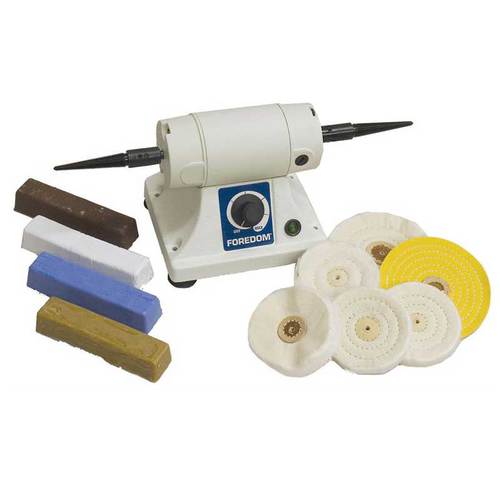



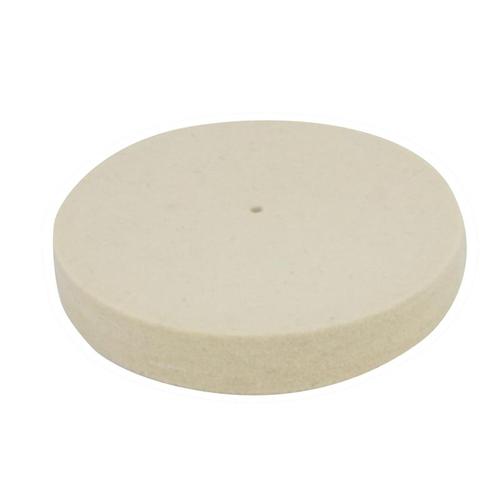
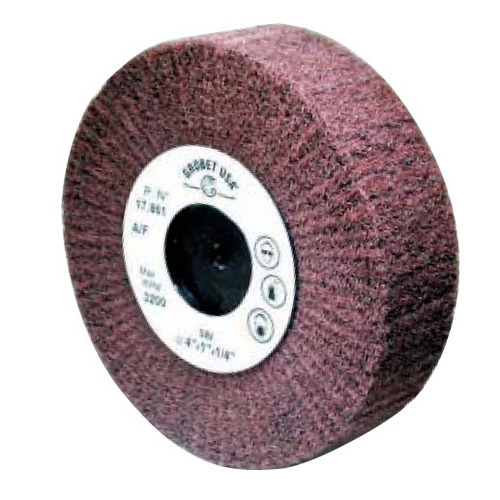


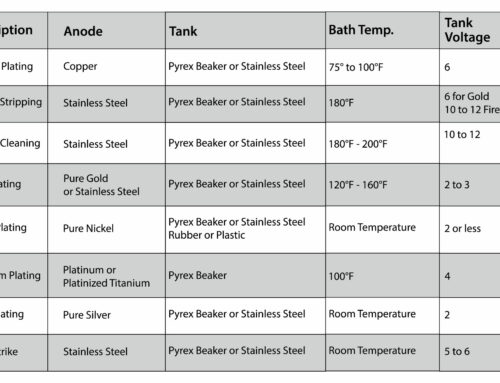
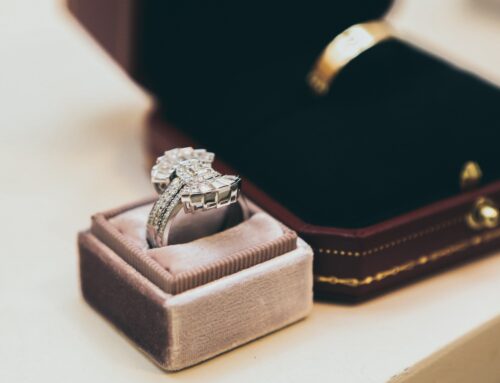

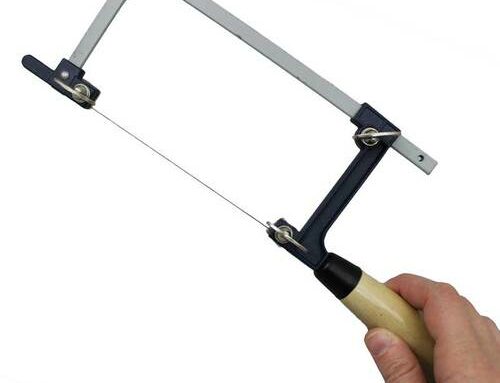
hello ! What I am wanting is a wheel for knife sharpening, used with a compound. I imagine it would be a very STIFF wheel. From the internet I learned to make a easy and, apparently, VERY effective deal after you cut yourself a perfect circle/wheel of 3/4 ” plywood for your generic bench grinder. I’ve made two, both kind of disasterous. I just want to BUY a wheel, that takes up this sharpening compound. Ideas for me ? Thankyou——CL
Are you looking to sharpen your knife or polish your knife? We have grinding stone wheels and we have polishing buffing wheels. You can use a stitched muslin buffing wheel with a heavy duty cutting compound. Depending on the size of wheel you are looking for, try this wheel: https://www.esslinger.com/buffs-finex-muslin-shellac-center-4diam-50-ply-4-row-stitch/
Search through our polishing buffs to find the ideal one for you here: https://www.esslinger.com/jewelry-buffs-1/
I am using buffing wheels for deburring serrated knives after sharpening. Currently I’m using red rouge on a loose non stitched un treated buff. I’m not totally satisfied with the results.
It’s most important that it conform to the small serrations, removing the burr but otherwise not changing the profile of the serrations.
What can you recommend?
You could try a green rouge that’s made for final polishing of harder metals like stainless steel on the un-stitched buff, or try a compound like Greystar that’s made for cutting and go very gently and light with the buffing to see if it de-burs to your liking without cutting down the serrations. Or try a stitched buff with the red or green rouge.
I am looking for something to brighten up copper door fixtures. They are very dark and nothing I have used will bring out the copper. Brasso and related compounds will not work.I am thinking a cotton buff with an abrasive is my only hope. These fixtures are well over 100 years old and they are dark brown/black will not come off. I am at my wits end, please help, Thank You.
From this article: https://blog.esslinger.com/guide-to-common-buffing-wheel-and-compound-combinations/
Working with Copper, Brass, Aluminum, Pot Metal and other Soft Metals
If you are working with any of these softer metals, we recommend that you use an uncombed cotton buff wheel with a black emery buffing compound for your initial rough cutting of the metal to remove scratches and other surface damages. For the final cutting and initial polishing stage of the process, it would be best to use a stitched muslin wheel combined with a brown Tripoli buffing compound. And finally, you will want to use a loose wheel with a white rouge buffing compound for the final polishing stage.
Hello! Im trying to find the right buffer to use to give a high shine to my resin jewellery. any tips or recommendations would be greatly appreciated. Thank you, Bonnie
Hello, I am looking for a buffing wheel or finishing wheel to polish a natural copper, buffed finish flashlight. The flashlight has no coating/lacquer on it, and was polished to high shine form the factory but began to patina immediately after opening (came sealed in oil in bag). I would love to accomplish a matte/satin brushed look or something similar to a matte “shot” look. I have a 5/8″ mandrel bench-top grinder. I have green and white compound I use to strop my blades with, but assume I will need a different color compound as well? Please help! I have also looked in to waxes, and think I will finish the matte finish flashlight with Renaissance wax to protect from oxidization / patina, as I am Not looking for the piece to patina naturally over time. Thanks! -Artie
Very Professional article! All the buffing wheels, as mentioned above, wheels kit work efficiently with other surfaces. Thank You for this informative blog.
I’ve been using a stitched cotton 6″ wheel with an “all-metal” compound to clean my handmade coin jewelry. The flat parts become nice and shiny in a few seconds but the small crevices around the lettering and other design elements tend to get a buildup of dirt and compound like an outline around them. It’s soft and can be removed with a fingernail but I’m trying to do this in large batches…. any ideas how to efficiently clean that out with a wheel? Maybe I need a wheel without compound or a different material for the final pass? Thanks.
Saw your question was wondering if u have considered a rock tumbler or vibrating one. Just a thought since ur doing large batches.
Hi I want to polish a diesel piston to make a lamp. What procedure and what kind of stuff to use.
Thank you
Hello. I appreciated this article. If I am looking to get a mirror finish on a piece of copper after sanding to 3000+ grit, which wheel would be most useful? It would seem a stitched or loose cotton wheel, but I’m just looking for confirmation of that. What would be best for a matte finish on the same piece? Additionally, can one use different grits of polishing compound in the same wheel? Or will one grit become predominant? Thank you.
You can use either a stitched buff or a loose buff for you’re final polish, just depends on your personal preference. To achieve a matte finish, you can try a satin finish buff in the finest grit available. You never want to use the same buffing wheel with different compounds. Always use a different wheel so you don’t get cross contamination of the grits – you’re high polish won’t work because the pre-polishing compound will still be there and will scratch your work.
Besides polishing wheels, is there any other way to polish? I’m thinking about bands or something else. Right now we have a process where we use felt buffs but you have to constantly rectify the felt and reapply abrasive to its surface so it’s kind of time consuming. Plus sometimes it damages the tip of the metal being polished, which is a relatively small area.
We do have some metal polishing pastes that you rub in with a lint free cloth to polish and add a protective coating. This will work to polish to a nice shine, but won’t help to remove scratches and dents.
https://www.esslinger.com/watch-and-jewelry-cleaner-simichrome-polish-1-76-oz-tube/
https://www.esslinger.com/flitz-metal-polish-50-g-tube/
or
You can try bristle brushes that are used in flex shaft motors. Soft bristles can be used to fine polishing in small and difficult areas often seen in watch band. https://www.esslinger.com/bristle-brush-wheels-1/
I need to clean and polish the portlights on my boat. They are made of bronze and have been exposed to ocean air for 20 years. They need deep cleaning and polishing
I want to put a buffing wheel on a bench grinder shaft, how wide are the buffer wheels where the fit onto the bench grinder shaft. The shaft diameter is 13 mm.
Most bench grinders have a tapered shaft that’s threaded to fit the buffing wheels. The wheels have small center holes that fit onto the threading and while the machine is turned on, the spinning motion of the shaft will thread the buff onto the shaft. We supply those tapered shafts if you do not have one, they come in 5/16″ diameter or 1/2″ diameter to fit the shaft diameter. https://www.esslinger.com/dust-collectors-and-motors-1/
Hi, is it applicable for hard materials? Which wheel suitable to get better surface finishing for H13 steel?
You can use a stitched buff that will be stiffer an allows you to apply more pressure as you polish the harder metal. For a high bright polish of hard metals like steel, you can use a green rouge compound.
Hi, is there any way to buff softer plastics? acrylic or acrylic enamel coated plastic? I once saw someone buffing a 2K gloss coated plastic…….
HI,
What would eb the best choice when polishing aliminium on an airstream?
Thanks
This site truly has all of the information I needed concerning this subject and didnít know who to ask.